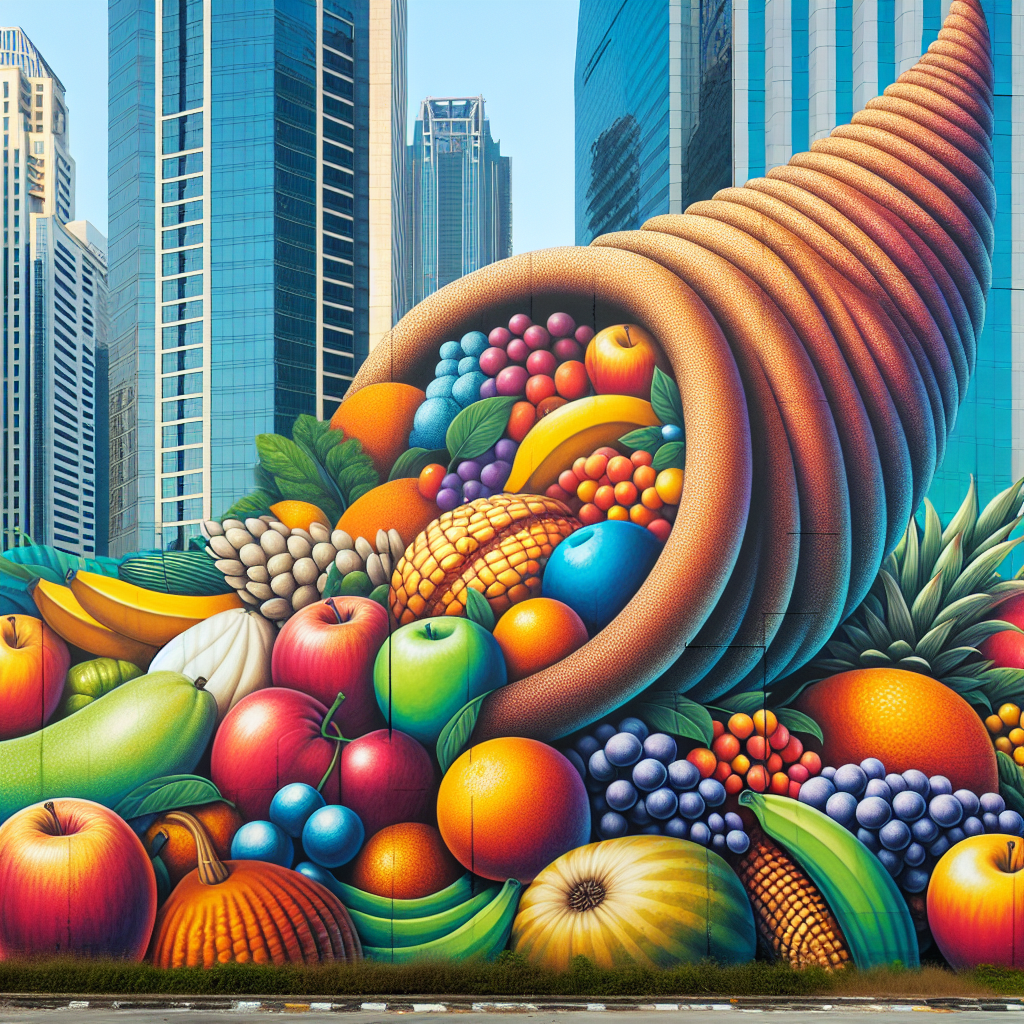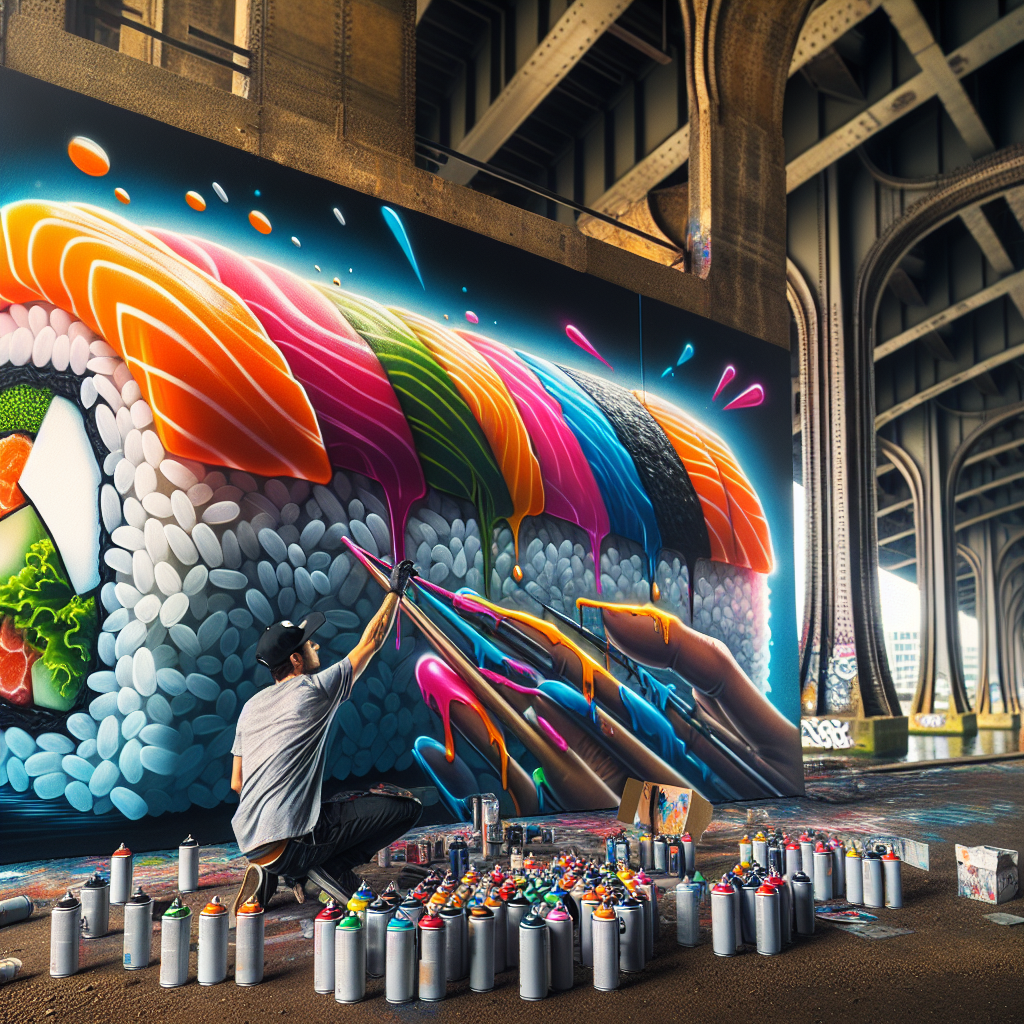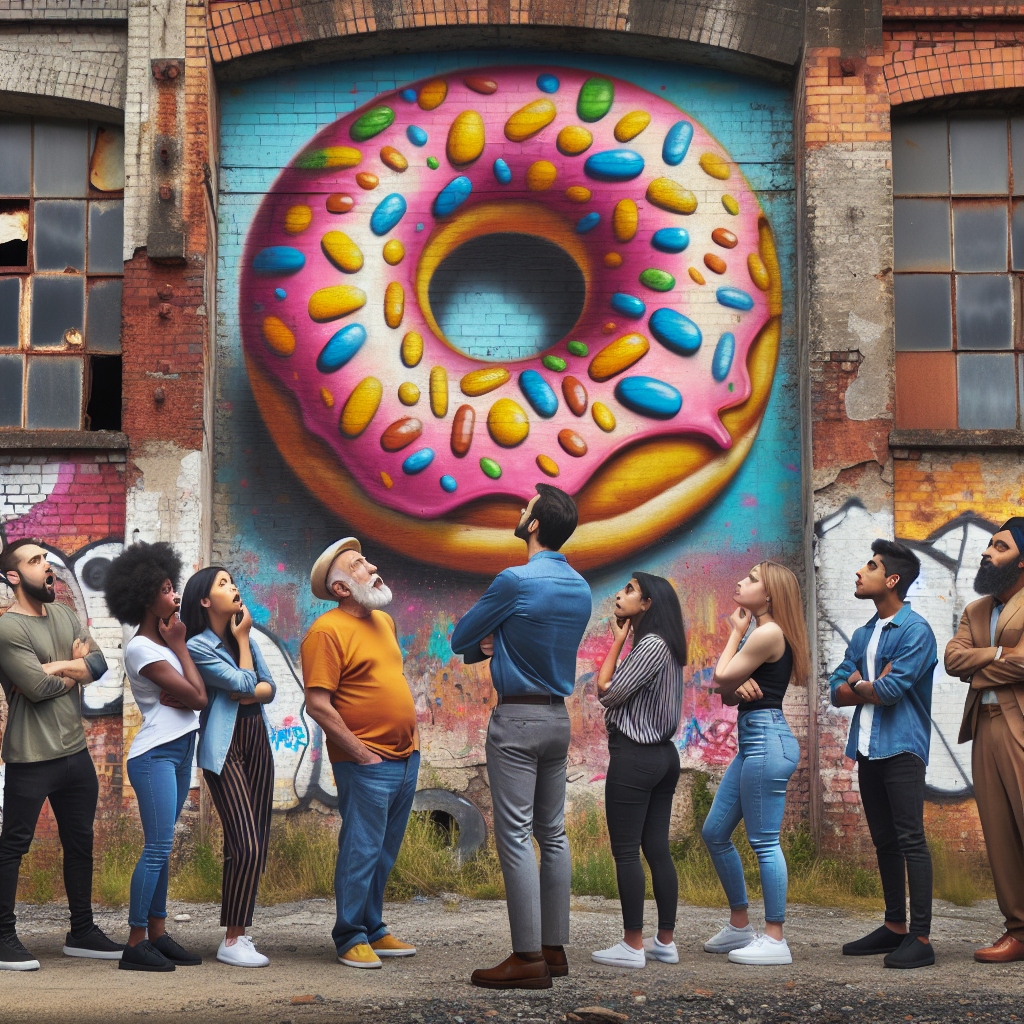
HISTORICAL CONTEXT
The concept of ‘food as art’ has been a contentious topic in many circles for centuries, with its origins dating back to ancient civilizations where banqueting was seen as not just sustenance but a celebration of artistic expression. Fast forward to today, this age-old debate finds itself revived in an unexpected arena – the gritty urban landscapes dominated by graffiti and murals.
THE BREAKING STORY
Bursting onto the scene with vibrant hues and tantalizing depictions of gastronomical delights, a new breed of street artists is causing quite a stir. These renegade creatives are garnering recognition from both food enthusiasts and contemporary art critics alike, turning nondescript walls into giant canvas echoing humanity’s universal love affair with food.
IMMEDIATE IMPACT
This phenomenon has had an immediate impact on local communities who have found their neighborhoods revitalized and footfall increasing around these once derelict areas. Moreover, it has inadvertently encouraged discussions about sustainability within food systems at grassroots level; ‘The environmental crisis in modern agriculture’, being one prominent theme depicted.

KEY PLAYERS INVOLVED
Influential figures like ‘GastroBanksy’, infamous for his avant-garde renditions of iconic dishes from various cuisines worldwide; or ‘Paula Pâtisserie’ famed for her mesmerizing oversized cupcakes sprawling across brick walls – have emerged from this transformative wave.
WHAT WE KNOW SO FAR
Our investigation revealed that many of these artists are self-taught, stemming from diverse culinary backgrounds. Some are chefs who have swapped their kitchen utensils for aerosol cans while others are food critics giving voice to their reviews through visual narratives.
PUBLIC REACTION
Fascinatingly, the public reaction has been overwhelmingly positive with both local and international tourists flocking to witness this innovative intersection between street art and culinary culture. Social media platforms are buzzing with photo-driven posts showcasing intimate encounters with this edible-inspired street art.

Culinary experts highlight how this movement is changing the way we perceive food – no longer confined to a plate but allowed free reign on city walls. Meanwhile, art scholars observe the profound use of symbolism in these works that paints a nuanced portrait of society’s complex relationship with food.
In response to growing popularity, cities have started recognizing these artists by offering them legal wall spaces and promoting ‘food-art’ tours. Official partnerships between established restaurants and graffiti artists also seem inevitable in shaping what commercial dining experiences look like in future.
This fusion provides an exciting opportunity for stirring conversations about important topics like sustainability, global hunger or cultural appropriation around food – issues often overlooked amidst today’s fast-paced gastronomic trends. Such powerful visual dialogues hold potential for change beyond aesthetics alone.
